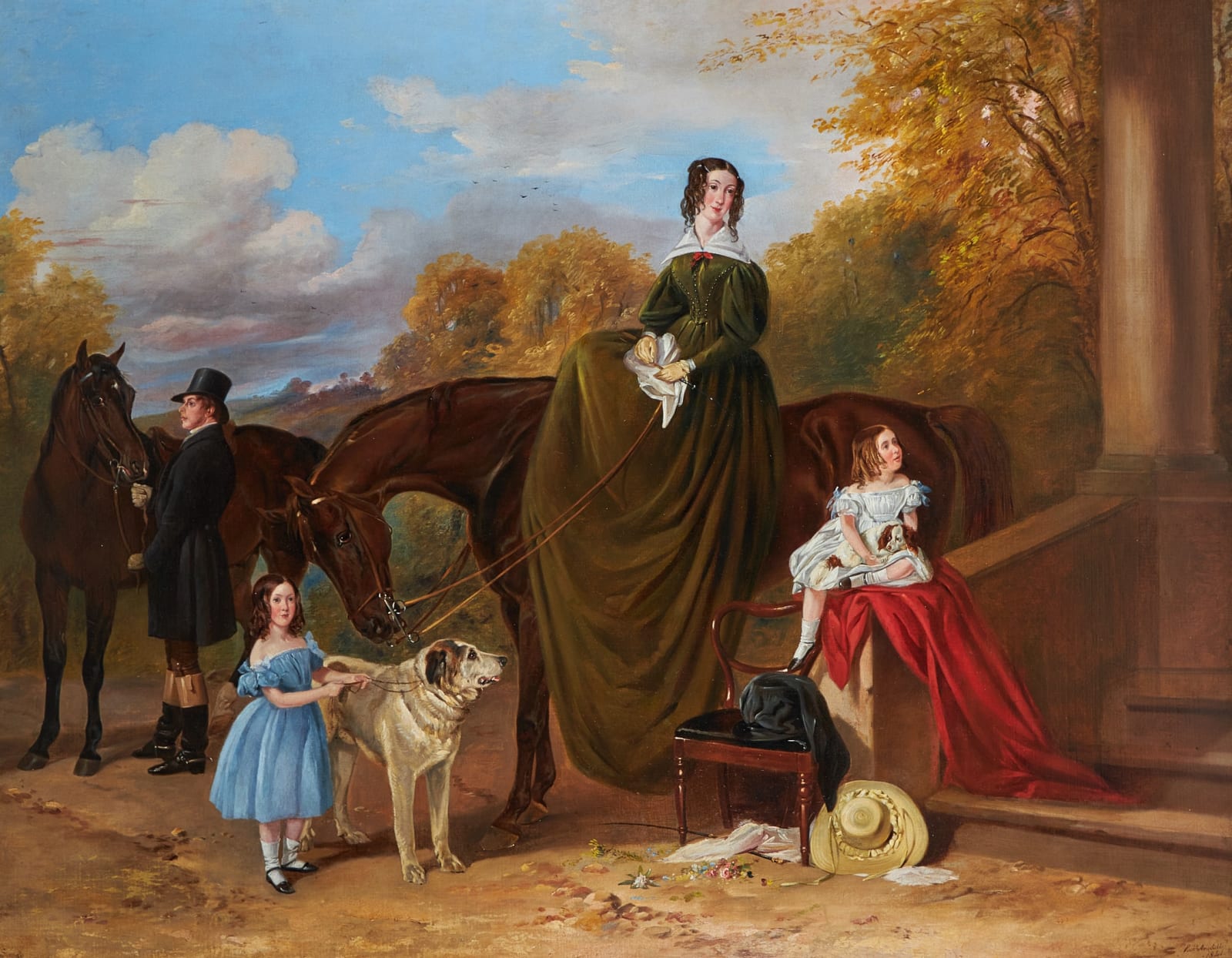Richard Ansdell, RA British, 1815-1885
Exhibitions
Edinburgh, Malcolm Innes Gallery; Lancashire, Lytham Hall; and London, Richard Green Gallery, Richard Ansdell R.A. 1815-1885, A Centenary Exhibition, 1985, no. 8 (as Family group with hunters and pet dogs).During the early stages of his career Richard Ansdell focused on portraits of the aristocracy to earn income and one of his principal patrons was William Molyneux, the 2nd Earl of Sefton. Painted in 1841, this work depicts William Molyneux’s daughter, Lady Caroline Harriet Towneley (1803-1866), with her daughters Caroline and Emily outside her family home Croxteth Hall. The black veiled top hat placed on the chair suggests that this is a tribute in mourning for one of Caroline’s brothers, Lieutenant Colonel Henry Richard Molyneux or Lieutenant Colonel George Berkeley Molyneux, who died in May and August 1841 respectively. The former died from an illness contracted in India and the latter due to an injury caused by a fall from a horse. All three family figures gaze towards the pentimento of a ghostly figure at the right-hand side of the canvas. The groom is facing the other way out of respect and the straw hat and strewn flowers beneath the chair symbolise how the happy days of summer are now over with the death of a beloved brother and uncle.
As the wife of Charles Towneley, Lady Caroline went on to spend her adulthood, until her death in February 1866, at Towneley Hall in Burnley, Lancashire, which remained the family seat until its sale in 1901 and today is a large museum and art gallery. Daughter Caroline (1838-1873) married Montagu Arthur Bertie, 7th Earl of Abingdon in 1858 and her sister Emily (1839-1892) married Conservative politician Lord Alexander Francis Charles Gordon-Lennox, fourth son of the 5th Duke of Richmond, in 1863. The third and last-surviving sister, Alice, Lady O'Hagan (1846-1921), sold Towneley Hall to Burnley Corporation in 1901 after the estate had been divided too far to sustain itself.
Richard Ansdell enjoyed enormous popularity during his own lifetime. His work was embraced by the public at large and he exhibited with great success at the Royal Academy, British Institution and at the Exposition Universelle in Paris 1855 where he was awarded a Gold Medal, third class. Today his pictures are held in the Tate, Royal Academy and Liverpool Museums amongst other national and international private collections. A rival to Landseer, both in execution and composition, he was one of the greatest animal and sporting painters of his day. His works are characteristically painted with precision and sensitivity.
The son of a Liverpool artisan, Ansdell's talent for drawing was recognised at an early age and he was briefly apprenticed to the portrait painter and silhouettist W.C. Smith in Chatham. He initially made his name around Lancashire, receiving commissions such as the present work and made his Royal Academy debut in 1840, where he went on to exhibit 149 works. He was elected a full Royal Academician in 1870.
